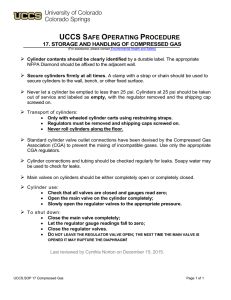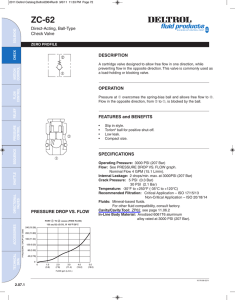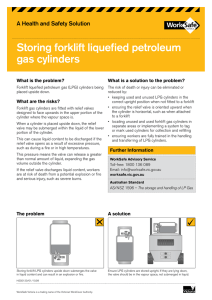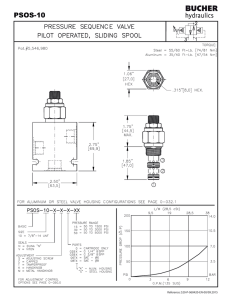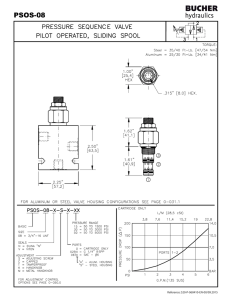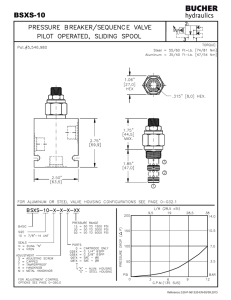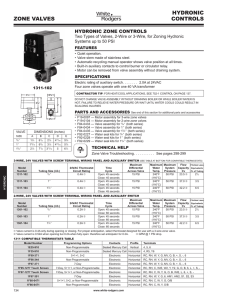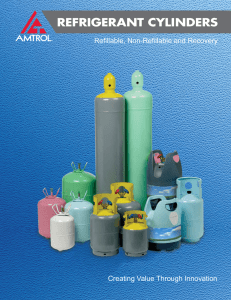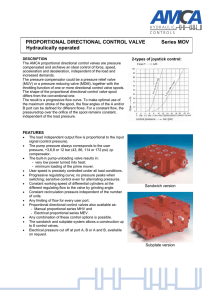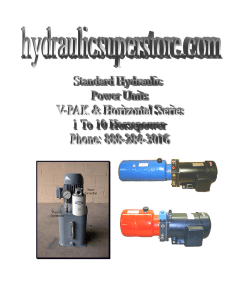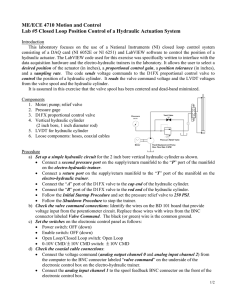2.141 Modeling and Simulation of Dynamic Systems Assignment #6—Optional
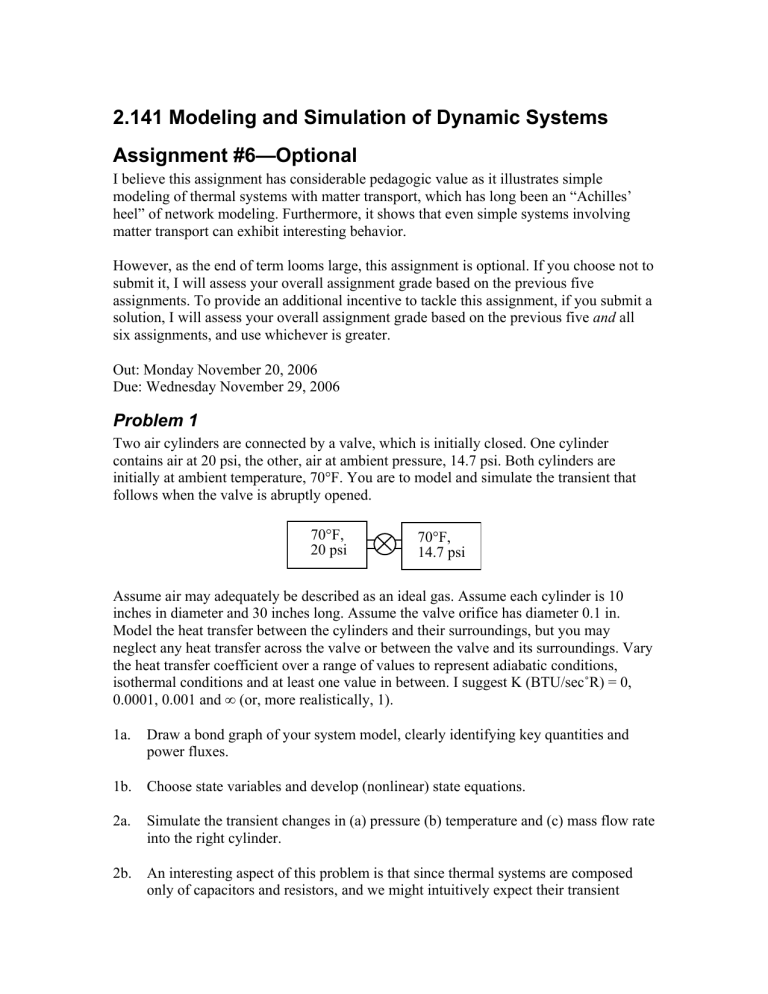
2.141 Modeling and Simulation of Dynamic Systems
Assignment #6—Optional
I believe this assignment has considerable pedagogic value as it illustrates simple modeling of thermal systems with matter transport, which has long been an “Achilles’ heel” of network modeling. Furthermore, it shows that even simple systems involving matter transport can exhibit interesting behavior.
However, as the end of term looms large, this assignment is optional. If you choose not to submit it, I will assess your overall assignment grade based on the previous five assignments. To provide an additional incentive to tackle this assignment, if you submit a solution, I will assess your overall assignment grade based on the previous five and
all six assignments, and use whichever is greater.
Out: Monday November 20, 2006
Due: Wednesday November 29, 2006
Problem 1
Two air cylinders are connected by a valve, which is initially closed. One cylinder contains air at 20 psi, the other, air at ambient pressure, 14.7 psi. Both cylinders are initially at ambient temperature, 70°F. You are to model and simulate the transient that follows when the valve is abruptly opened.
70°F,
20 psi
70°F,
14.7 psi
Assume air may adequately be described as an ideal gas. Assume each cylinder is 10 inches in diameter and 30 inches long. Assume the valve orifice has diameter 0.1 in.
Model the heat transfer between the cylinders and their surroundings, but you may neglect any heat transfer across the valve or between the valve and its surroundings. Vary the heat transfer coefficient over a range of values to represent adiabatic conditions, isothermal conditions and at least one value in between. I suggest K (BTU/sec ˚ R) = 0,
0.0001, 0.001 and ∞ (or, more realistically, 1).
1a. Draw a bond graph of your system model, clearly identifying key quantities and power fluxes.
1b. Choose state variables and develop (nonlinear) state equations.
2a. Simulate the transient changes in (a) pressure (b) temperature and (c) mass flow rate into the right cylinder.
2b. An interesting aspect of this problem is that since thermal systems are composed only of capacitors and resistors, and we might intuitively expect their transient
responses to exhibit no overshoot. You should be able to show that this is not always true. Comment and explain.
2c. Check the veracity of your simulation by computing the equilibrium conditions in each tank after the transients have expired. (Calculating equilibrium states before and after is standard engineering thermodynamics.)
3. A much more common situation (as any SCUBA diver knows) is to fill a cylinder from a (nominally) constant-pressure supply. One way to model this situation is to assume the left-hand cylinder in the diagram above is extremely large (so that withdrawing air from it changes its pressure very little). Use the model you developed to simulate this situation. What is the minimum set of properties needed to specify the air supply?
4. Modify your model to include heat transfer across the valve due to any temperature difference between the two cylinders.
5. The pressure difference above was chosen to keep valve flow in the non-choked flow regime. Of course, realistic pressure differences are much higher. (A typical
SCUBA tank is routinely filled to 3,000 psi.) Revise your model and simulation to cover this situation. In this case, how valid is the assumption of no heat transfer at the valve?
